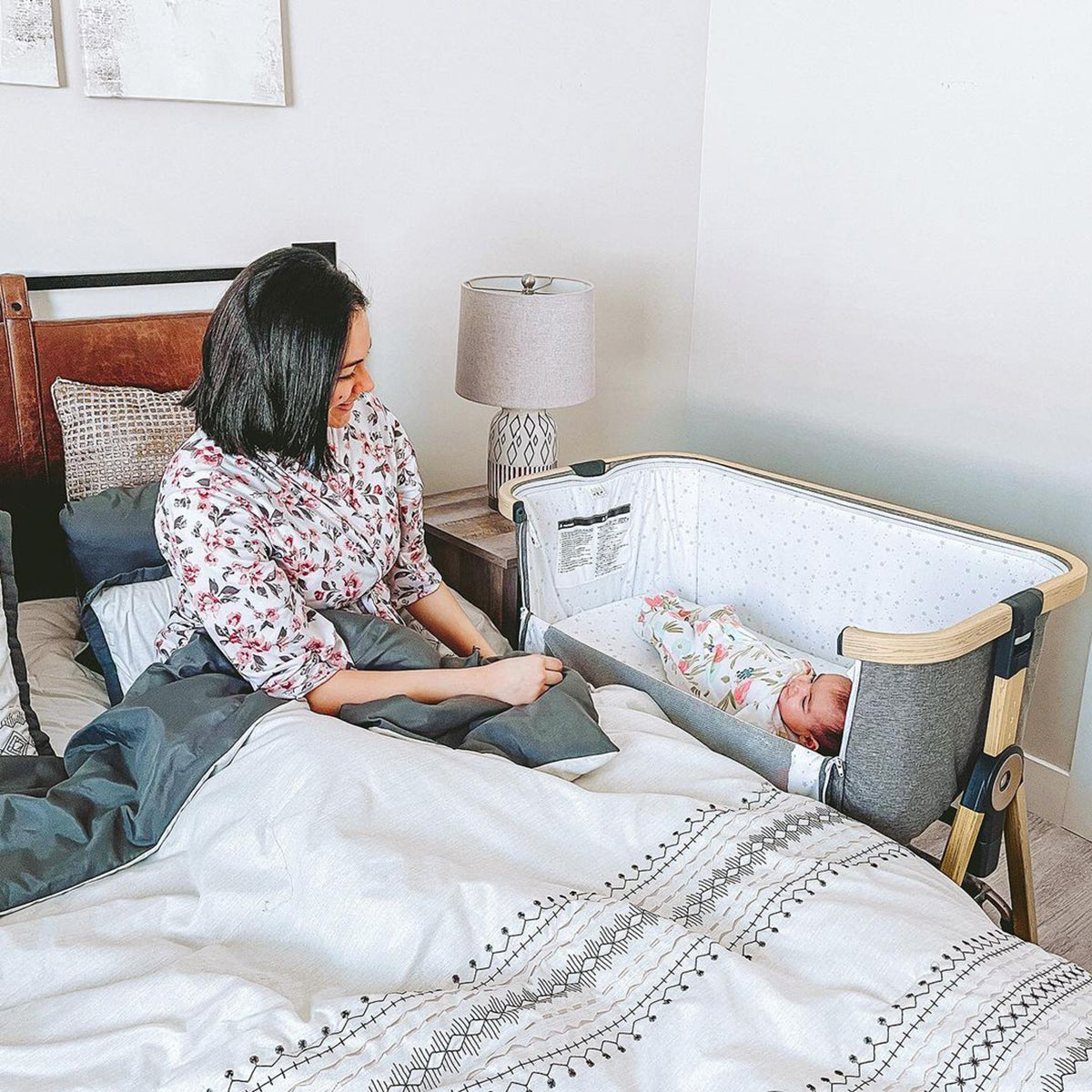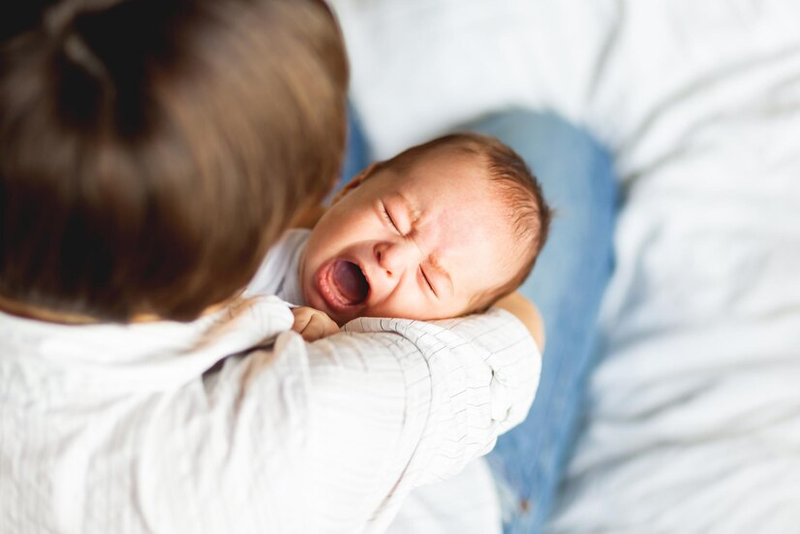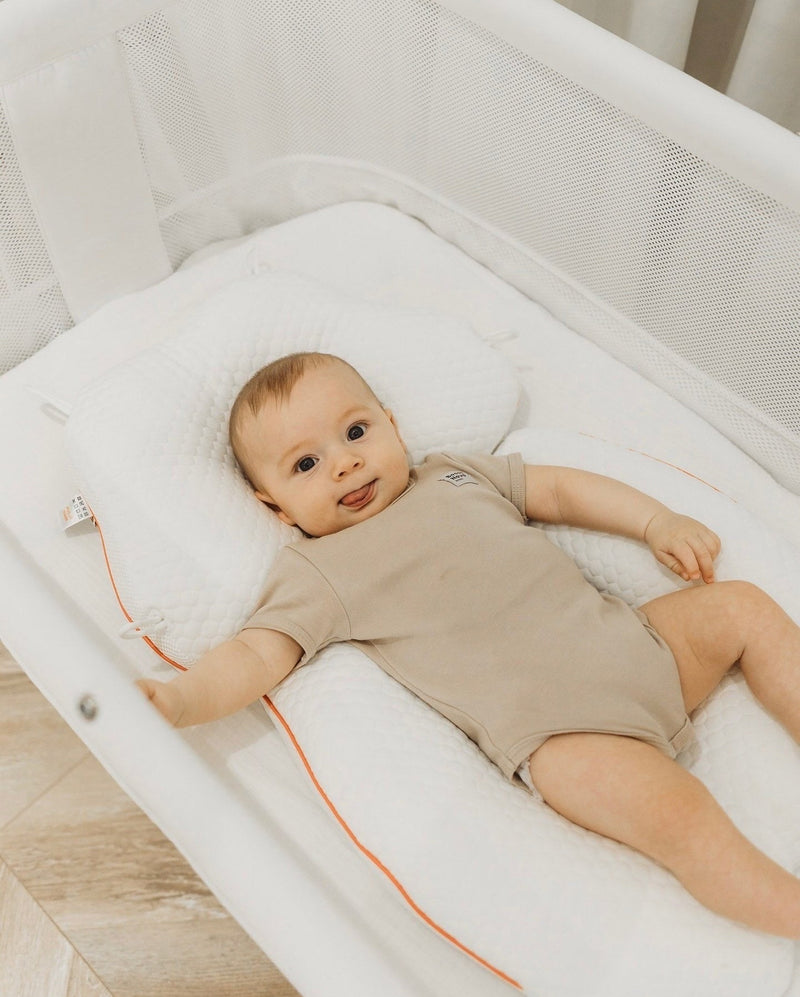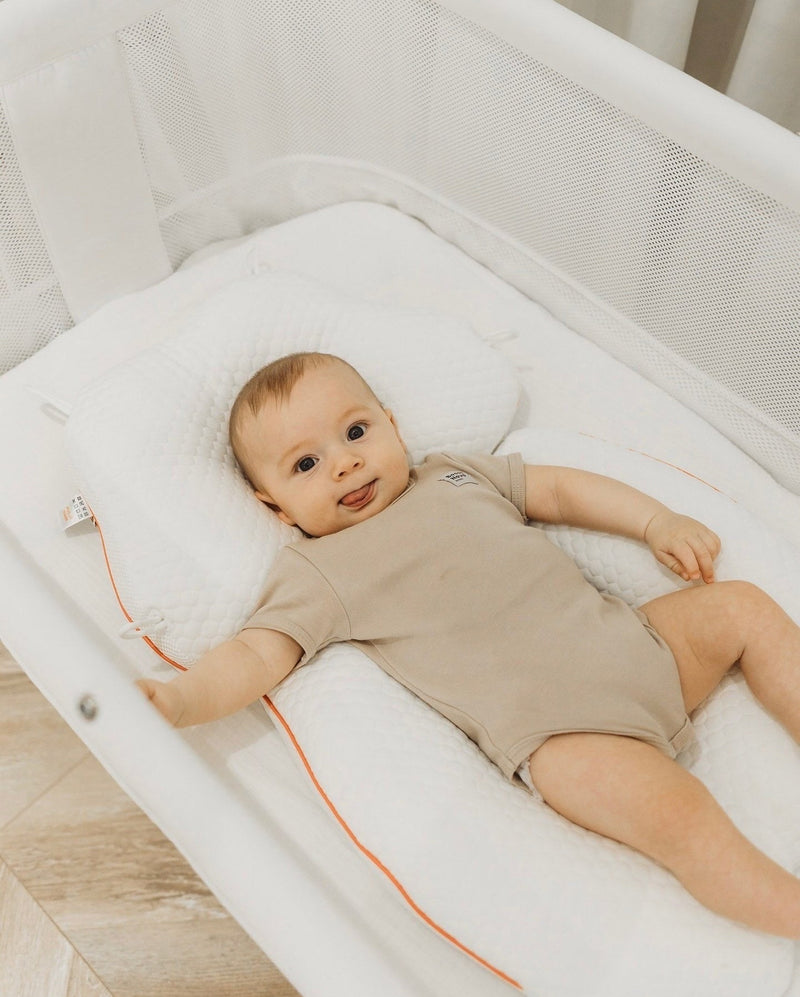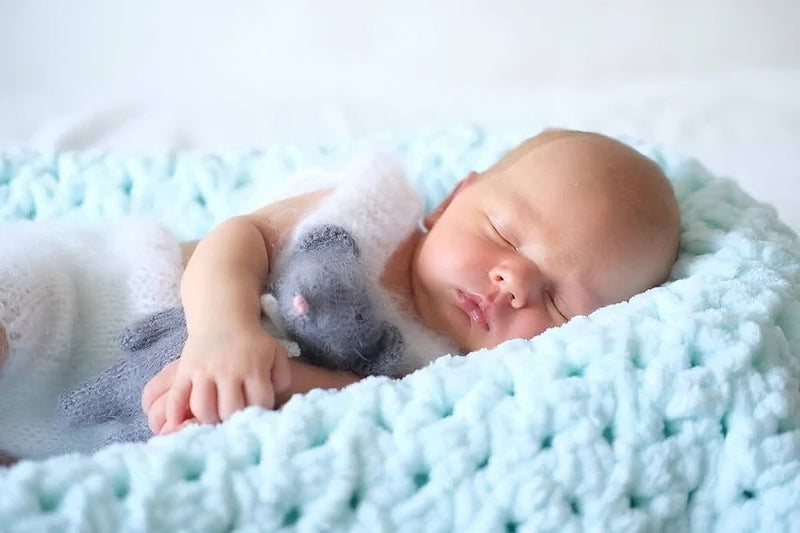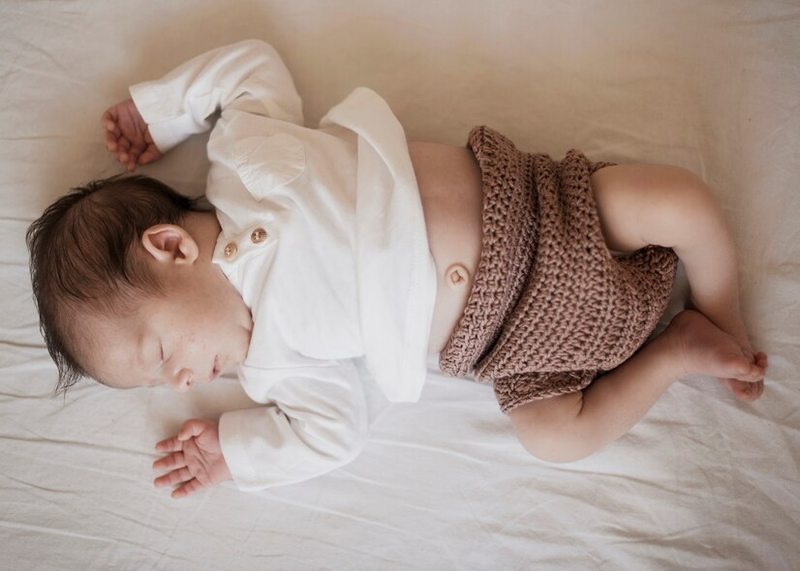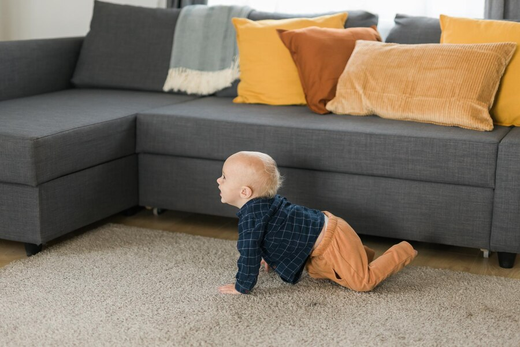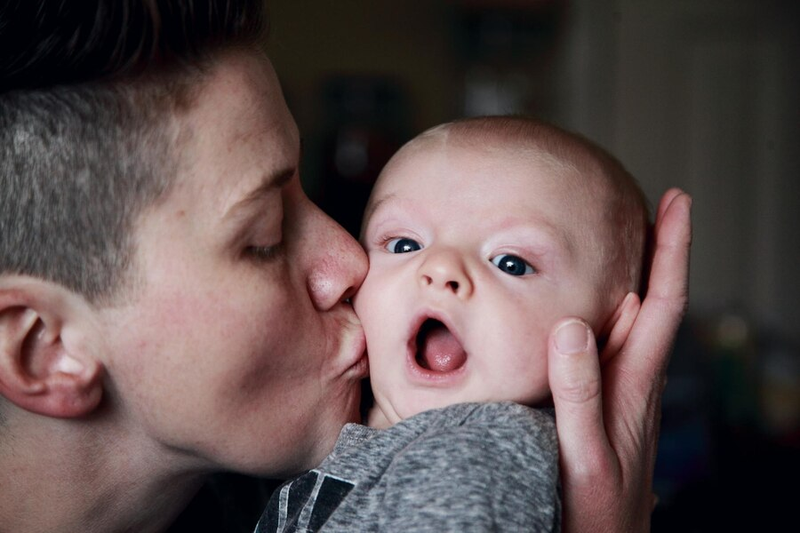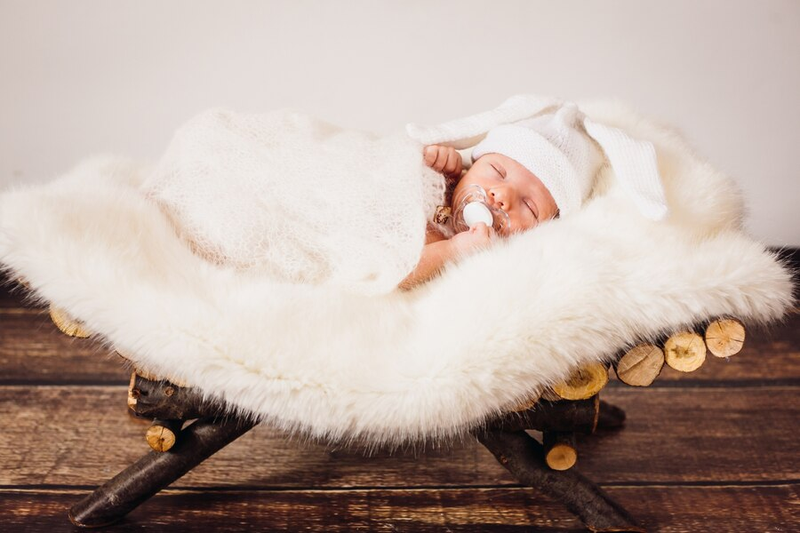Introduction
For new parents, few decisions feel as critical as choosing the right sleep space for their newborn. Bassinets are a popular choice for their portability, cozy design, and bedside convenience. However, questions about safety and longevity often arise: How long can a baby sleep in a bassinet? When is it time to transition to a crib? This guide answers these concerns with evidence-based guidelines and developmental milestones.

Why Bassinets Are the Go-To Choice for Newborns
Bassinets are engineered to meet the unique needs of newborns. Their compact size replicates the snugness of the womb, which can calm a baby’s startle reflex and promote deeper sleep. Additionally, their portability allows parents to keep infants nearby for nighttime feedings and supervision without sacrificing space.
Top Benefits of Bassinets:
-
Proximity to Parents: Bedside placement supports bonding and simplifies nighttime care.
-
Space Efficiency: Ideal for small nurseries, apartments, or shared rooms.
-
Portability: Lightweight frames and compact designs enable easy room-to-room movement.
-
Breathable Materials: Many models feature mesh siding for airflow, reducing overheating risks.
However, baby bassinets are not a long-term solution. Most are designed for infants up to 4–6 months or 15–20 lbs (6.8–9 kg). Exceeding these limits compromises safety and comfort.
How Long Can a Baby Safely Sleep in a Bassinet?
The answer depends on three factors: weight limits, developmental milestones, and bassinet design.
1. Weight Limits
All bassinets have a maximum weight capacity, typically 15–20 lbs (6.8–9 kg). Exceeding this risks structural instability, increasing the chance of tipping or collapse. Always check your model’s manual for specifics.
2. Mobility Milestones
Once a baby can roll over independently (usually around 3–4 months), bassinets become unsafe. The confined space raises suffocation risks if the infant rolls onto their stomach or presses against the sides.
3. Size Constraints
Even if weight limits aren’t reached, babies often outgrow bassinets by length. If their head or feet touch the bassinet’s ends, it’s time to transition to a larger sleep space.
Pro Tip: Track your baby’s growth and mobility weekly. If they’re nearing limits, start planning the crib transition early to avoid rushed adjustments.

Bassinet Safety: AAP Guidelines and Common Risks
The American Academy of Pediatrics (AAP) outlines strict safe sleep practices to minimize SIDS (Sudden Infant Death Syndrome) risks:
-
Back-to-Sleep: Always place babies on their backs.
-
Firm, Flat Surface: Avoid soft mattresses or inclined sleepers.
-
Empty Crib Rule: No pillows, blankets, stuffed animals, or loose bedding.
-
Room-Sharing: Keep the bassinet in your bedroom for the first 6–12 months.
Common Bassinet Safety Mistakes to Avoid:
-
Using non-approved accessories like padded liners or sleep positioners.
-
Ignoring recalls or signs of wear (e.g., wobbly legs, torn mesh).
-
Placing the bassinet near cords, blinds, or other hazards.
When to Move Your Baby Out of a Bassinet: 4 Key Signs
Transition timing varies, but these signs indicate it’s time to switch to a crib:
-
Reaching Weight/Height Limits: Check your bassinet’s manual monthly.
-
Rolling Over: Even “mini-rolls” warrant immediate action.
-
Pulling Up: If your baby grips the sides to sit or stand, the bassinet is no longer secure.
-
Sleep Disruptions: Frequent waking or discomfort may signal they’ve outgrown the space.
Transitioning to a Crib: A Step-by-Step Guide
Moving your baby to a crib is a major adjustment. Follow these steps to ease the process:
1. Choose the Right Timing
Aim to transition between 4–6 months, before separation anxiety peaks (around 8–10 months).
2. Create a Familiar Sleep Environment
-
Use the same sheets, swaddles, or sleep sacks from the bassinet.
-
Replicate sounds (e.g., white noise machines) or lighting conditions.
3. Start with Daytime Naps
Introduce the crib during shorter, less stressful naps. Gradually extend to overnight sleep.
4. Gradual Transition Method
-
Week 1: Use the crib for 1–2 naps daily.
-
Week 2: Alternate nights between the bassinet and crib.
-
Week 3: Transition fully to the crib.
5. Address Resistance Calmly
If your baby fusses, comfort them with pats or shushing without immediately picking them up. Consistency is key!
Modern Solutions for Extended Safe Sleep
Traditional bassinets have short lifespans, but innovative designs like the Maydolly 506 Smart Electric Cradle bridge the gap between bassinets and cribs, offering extended usability without sacrificing safety.
Why the Maydolly 506 Stands Out
Extended Usability:
-
Designed for babies up to 24 months—or until they can push up on hands/knees, roll over unassisted, or reach 20 lbs (9 kg), whichever comes first.
-
Larger Sleep Surface: Offers 30% more space than standard bassinets, accommodating growth spurts.
Safety First:
-
Independent Lab Certification: Tested by accredited labs, confirming no serious suffocation risks compared to traditional bassinets.
-
Anti-Rolling Design: Reinforced sidewalls prevent accidental flipping.

Smart Soothing Technology:
-
Cry Detection: Patented sensors detect fussing and automatically activate gentle rocking or lullabies.
-
Customizable Modes: Choose from 5 rocking speeds, 3 sound options (white noise, nature sounds, classical music), and adjustable height levels.
Parent-Friendly Features:
-
Dual Power Modes: AC adapter or battery-operated for portability.
-
Easy Assembly: Tool-free setup takes under 10 minutes.
-
Machine-Washable Fabric: Removable, hypoallergenic cover simplifies cleaning.
Ideal For:
-
Parents seeking a long-term sleep solution that adapts to developmental milestones.
-
Families who travel frequently and need a portable, versatile sleep space.
-
Babies who struggle with self-soothing or reflux and benefit from motion.
to extend safe, comfortable sleep beyond the bassinet stage.
FAQs About Bassinet Safety and Transitions
Q: Can I use a bassinet past 6 months if my baby is small? A: Only if the manufacturer’s guidelines allow it. For example, the Maydolly 506 accommodates babies up to 24 months, provided they haven’t met mobility/weight limits.
Q: How do I clean and maintain my bassinet? A: Follow the manual’s instructions. Most modern models (like the Maydolly 506) have removable, machine-washable covers. Wipe frames weekly with a damp cloth.
Q: Are smart cradles safe for overnight sleep? A: Yes, if they meet CPSC and ASTM safety standards. The Maydolly 506’s anti-rocking locks and breathable mesh ensure safe, uninterrupted sleep.
Q: What if my baby hates the crib? A: Use transitional tools like the Maydolly 506’s rocking modes or white noise to mimic the bassinet’s comfort. Stay patient—adjustments can take 2–3 weeks.
Q: Can I use a bassinet for twins? A: Most standard bassinets are for single babies. Check for twin-specific models or opt for a larger smart cradle with dividers.
Conclusion
Understanding how long a baby can sleep in a bassinet—and when to transition—is crucial for safety and developmental progress. While traditional bassinets serve newborns well, innovative solutions like the Maydolly 506 Smart Electric Cradle offer extended usability, smarter features, and lab-certified safety, empowering parents to prioritize their baby’s comfort without constant upgrades.
For more guidance on infant sleep or to explore the Maydolly 506’s full capabilities, visit

